A rough guide to cover up tattoos.
In this blog, I am going to try and give a bit of an overview of cover-up tattoos: the different options and the pros and cons of each; what is possible; what you can expect and what are realistic expectations. I will also include a little bit of info about laser tattoo removal and the difference between laser removal and a cover-up.
I don’t intend for this to be the most exhaustive blog ever written because, to be honest, I can’t be bothered to source a million photos for it.
The basics.
All tattoos can be covered up with something. The question is whether you will be happier with the end result than you are now.
As a very rough guideline, the smaller, the lighter and/or softer your original tattoo is the easier it will be to cover. The darker and more solid the final tattoo is, the more likely it is to work as a cover-up, but there are caveats.
Some colours are more opaque and some are more translucent. Generally speaking, colours that have a little bit of white in them tend to be more opaque So even though a light blue may appear lighter than red, red is generally more translucent and so may not be a better option. The problem is that you never really know until you get stuck in, sometimes things cover really well, and you can get away with a surprisingly light colour and sometimes things stubbornly always show through once it’s healed. All I can say is pick a good and experienced tattooist and they should know this stuff.
Soft, black and grey work is never a great option for a cover-up, because grey is just a translucent, diluted black. Most things will need lasering down to almost nothing to get them covered with soft black and grey work. It is possible to use an opaque grey – a grey dilated with white rather than just water – and that does give you slightly more options, but also a slightly different look to the end result.
So to give some examples, if you have a small watercolour flower with no black in it, you can probably cover that with almost anything. If you have some really solid lettering in black, the only thing you are realistically covering that with is black, unless you hide it in the section of a much larger design.
Design matters.
It is easier to cover things up with a design full of lines and texture than it is to cover things with smooth gradients of colour or shading. For example, I’d rather hide things behind the scales of a koi or the petals of a flower than in the smooth cranium of a skull.
The inverse of this is also true. If the tattoo that you already have is a few random marks on an arm, for example, it will be far less noticeable underneath the cover-up. If your existing tattoo is a straight solid black line wrapping around the arm, that is a much harder prospect and in reality, it will probably always be noticeable.
Size matters.
This should be obvious but it bears repeating, you cannot cover a tattoo with a smaller tattoo. Whatever you have now that you don’t like, the new tattoo will need to be bigger. On top of that, the bigger the new tattoo goes the more options you will have and the less likely you are to notice that it is a cover-up. Even the darkest small tattoo on the wrist is usually pretty easy to hide in a full-sleeve cover-up.
A word on composition.
Composition does matter, but is not always something people think about. As already mentioned, the new tattoo needs to be bigger than the old one, so you need the space for the new one to expand into. If for example, you have some solid black lettering in a line right at the bottom of your wrist, it restricts your options to cover because of where it is placed on the body. The entire new tattoo will generally need to be above the existing piece as there are real limits to tattooing onto a palm.
Realistic expectations.
Most finished coverup tattoos will still have tiny little bits of the old tattoo that are noticeable. If you know what you are looking for, or you know the old tattoos there, you can usually spot it. It is important to be realistic with your expectations. It is all about drawing the eye away with the appropriate design and being realistic with colour choices.
Blackouts, blast overs and blackwork.
The one failsafe method to cover anything is the blackout tattoo. Black will cover anything. The only thing to be aware of is that you can’t do anything about the texture of an existing tattoo. So if your existing tattoo sometimes rises up in the heat, or you can feel a slight bumpiness on the lines, even if you black over the top of it, you may still see it in certain lights and be able to tell that there was something underneath originally.
If a full blackout tattoo is not to your taste, there are other options generally referred to as a blast over. This is generally putting a new black or blackwork tattoo over the top of something else and not worrying about the old tattoo showing through. You can even put a new black tattoo over an old black tattoo, and the difference can sometimes still make for a nice effect. (I do have my suspicions as to how well this will hold up over time, as I think that the new tattoo will eventually fade, and the difference between the two will become less and less noticeable.)
My preferred option is probably a mix of the two, such as the sleeve which I’ve included here. I love doing work like this which is a big, heavy, bold blackwork tattoo, but to me a little more interesting than a full blackout. This particular sleeve also has had a pass of white over the negative sections which helps knock back some of the colours in those areas. It is a subtle difference but it helps.
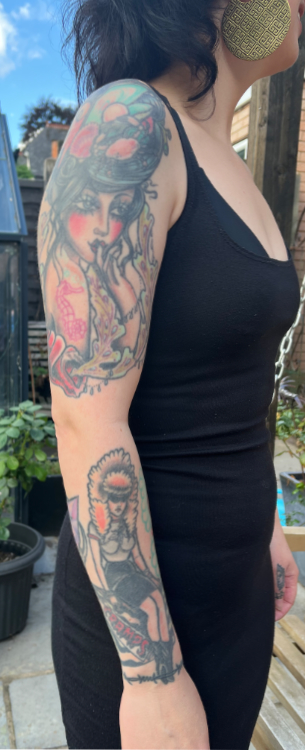
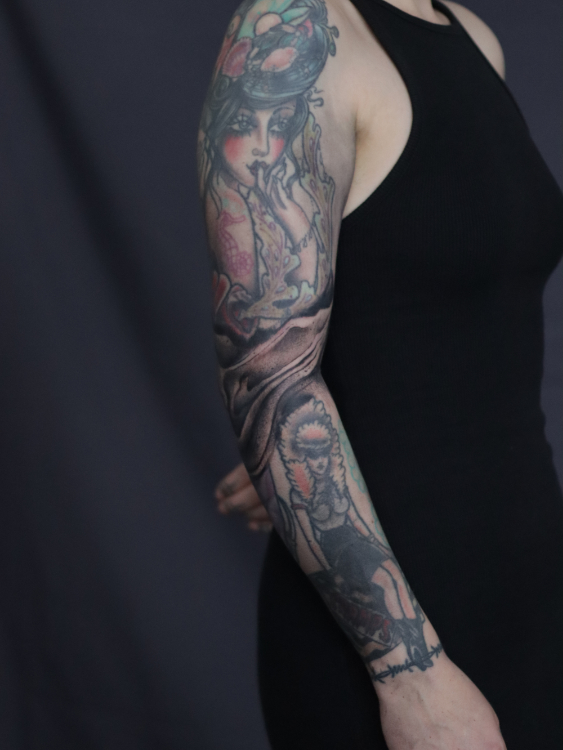
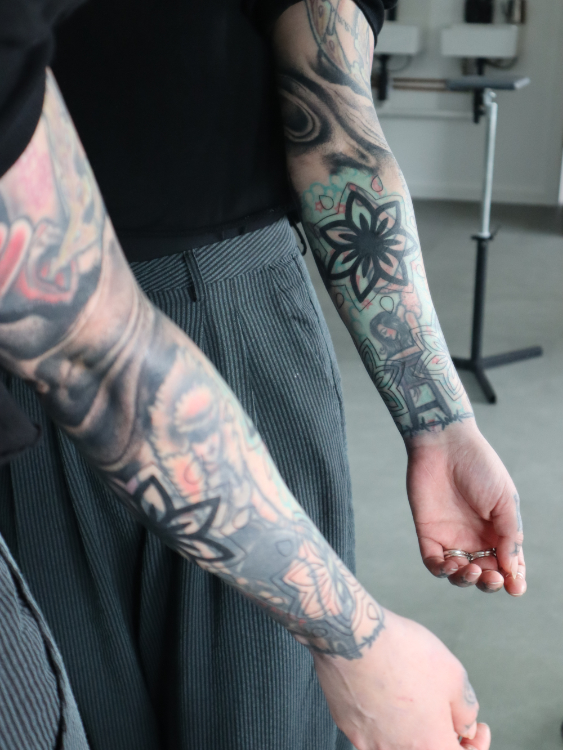
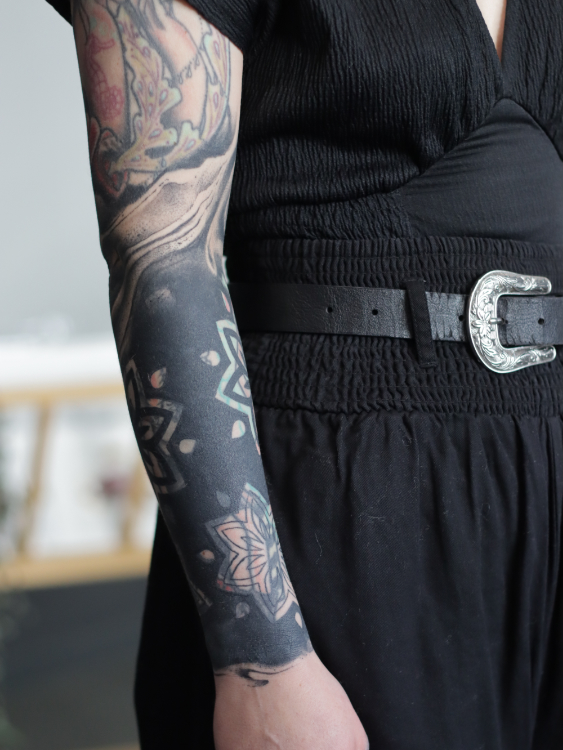
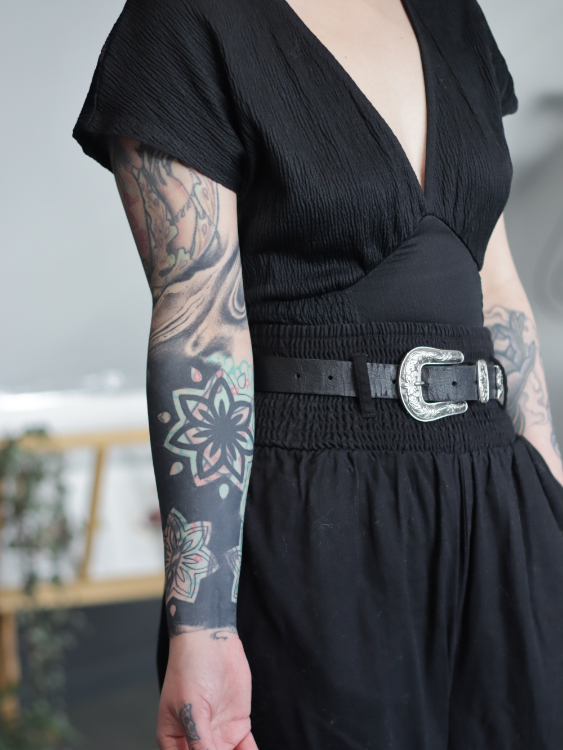
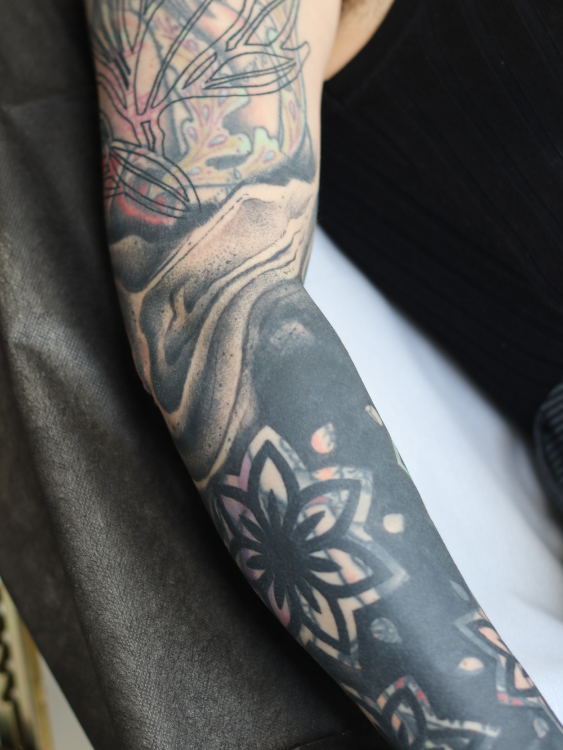
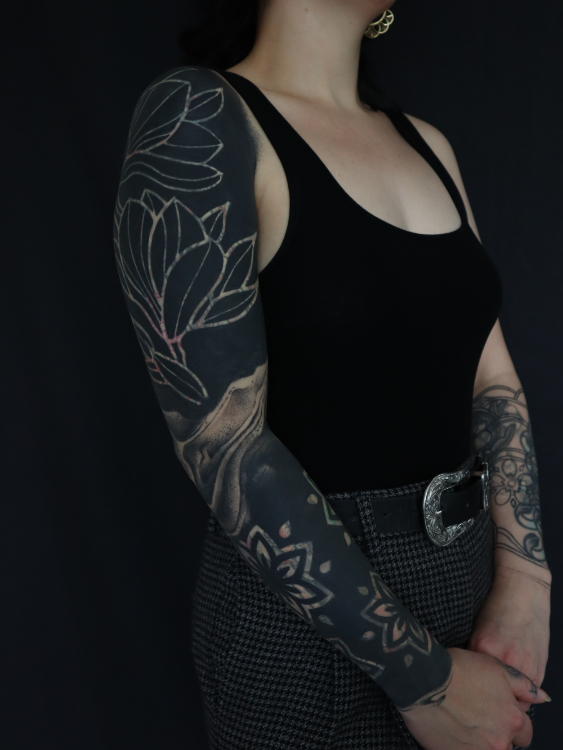
White over black tattoos.
One thing that you may have seen on Instagram is white ink tattoos over solid black. I’m not going to say too much about this because it is not my area of expertise. I would only really be happy doing it for somebody if they were an existing client or an experienced tattoo collector. The reason I say that is because I do think you have to be realistic about expectations. I think that in the long run, the effect here will be pretty subtle and any pictures you’ve seen online where people try and get too fancy, well let’s just say I am sceptical. There is literally no point looking at these tattoos, freshly done and photographed. You really need to see a photo of a healed tattoo after a year or two.
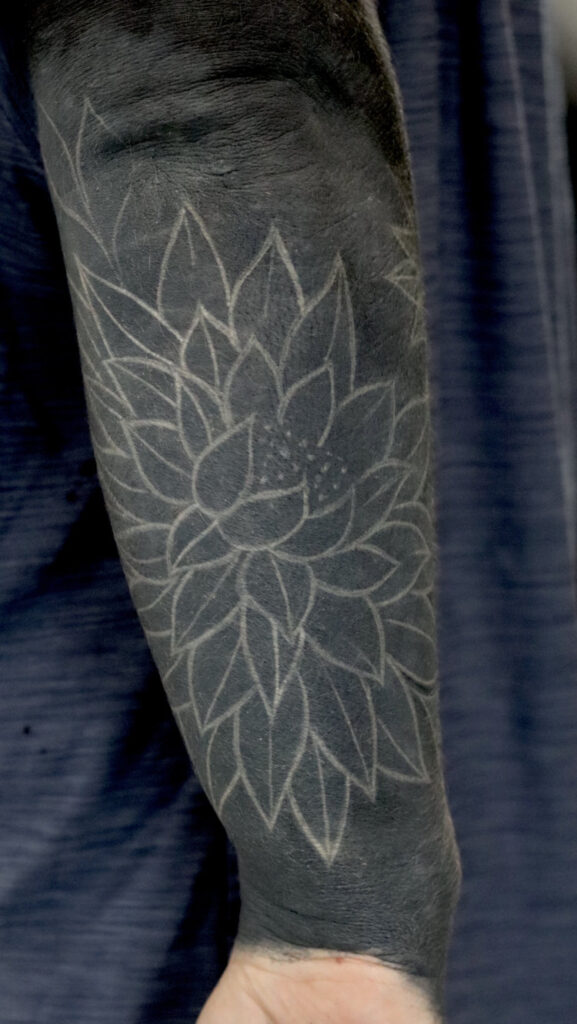
What about laser tattoo removal?
My former shop, Modern Body Art in Birmingham was one of the first tattoo studios in the country to offer laser tattoo removal so I have a lot of years of experience in running a business that offers this, and I have lasered many people. Also, I have been extensively lasered myself and have a lot of experience on the other side.
The pros:
- To achieve some final results, this really is your only option. For instance, if you want a soft black and grey realism piece or a soft colour piece over something pretty dark, then this is for you.
- The results can be amazing on some pieces. Particularly soft, black and grey work tends to come out comparatively easily.
- Getting a tattoo faded by laser before a cover-up is a great middle-ground and the results can be great. Colours are generally untouched by the laser (there are exceptions that I won’t go into here) but in the context of fading for a cover-up, it’s never usually the colour that is the problem so one can still achieve a good result.
The cons:
- It hurts! This cannot be understated. Now, for some people, the pain is maybe similar or slightly worse than getting tattooed, and it’s something that they find manageable. But I am going to be honest here, some people find it really tough. Significantly worse than getting tattooed and really too tough to have too many sessions with.
- The results can be mixed. Sometimes dark tattoos can be surprisingly stubborn, and it can take multiple sessions. Tattoos done over multiple sessions (or by various people) can have ink at all different layers in the skin which will slow down results.
- It is quite a slow process with multiple sessions and 6 to 8 weeks between each session. You could be lucky and be getting three or four sessions until you are ready for the cover-up, or if it is a heavy black piece, you could be looking more like 10 to 12 sessions.
- It is somewhat dependent on skin tone and darker skin tones may find it more painful and not get such good results. Unfortunately, this is somewhat true of tattoos in general, including cover-ups. The lighter one’s skin tone, the more options they will have.
There you have it, I think that is everything! I hope this helps somewhat. There is always an element of individual cases having different needs so there is a limit to how much I can help everyone with one blog. Obviously, get in touch if you want me to look at what you have and to see what your options are.